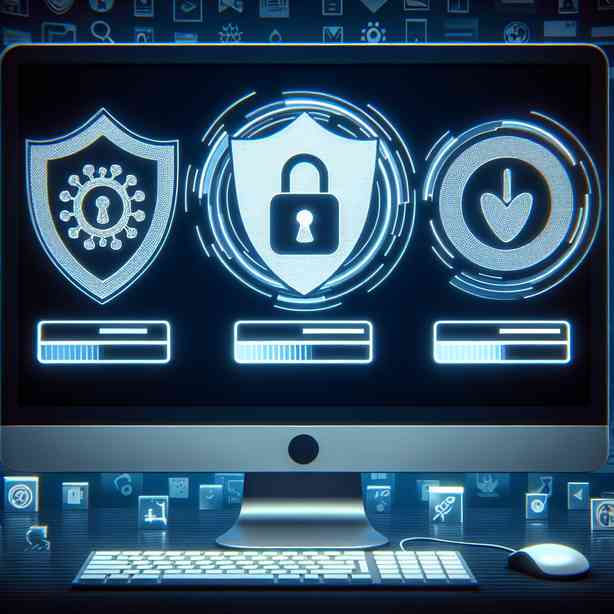
When it comes to cybersecurity, many individuals often find themselves grappling with the best ways to protect their devices from potential threats. One common misconception is that installing multiple antivirus programs can provide a heightened level of security. While it may seem logical to think that having several layers of protection is beneficial, the reality is often quite the opposite. Let’s explore the implications of installing three antivirus programs on your system and the potential challenges it may bring.
To start, it’s essential to understand the primary functions of antivirus software. Each antivirus program is designed to detect and remove malware, such as viruses, worms, trojans, and ransomware. They employ various techniques—including signature-based detection, heuristic analysis, and real-time monitoring—to identify malicious software. This creates a robust barrier against threats. However, this robust functionality can lead to complications when multiple solutions are installed on a single device.
One of the immediate risks of running multiple antivirus programs is the potential for conflicts between them. Each software may attempt to access the same system resources at the same time, leading to performance issues and system slowdowns. When these programs compete for control over scanning, detecting, and quarantining files, they can generate false positives, misidentifying legitimate files as threats. Users may find themselves overwhelmed by constant alerts and notifications, creating frustration rather than a sense of security.
Moreover, there’s the issue of system resources. Antivirus programs often run background processes that consume CPU and memory. When three different programs are installed, they can significantly decrease the overall performance of your device. Tasks that once took moments may now drag on, affecting productivity and user experience. This situation highlights the importance of selecting a single, reliable antivirus solution that suits your specific needs instead of piling on multiple programs.
Another crucial consideration is the potential for gaps in security. While each antivirus may excel in specific areas—one might be exceptional at identifying rootkits, while another shines in phishing protection—their strengths may not be complementary. When they are combined, there can be overlaps that create blind spots, where specific threats slip through undetected. Cyber attackers are always developing new strategies, and their methods can easily exploit any existing vulnerabilities.
While users may feel a sense of increased security with multiple antivirus programs, they might find themselves lulled into a false sense of security. Relying on several programs might lead users to be less vigilant with safe browsing practices and system updates, which are critical components of overall protection. No antivirus software can guarantee 100% protection, and a proactive approach is essential in today’s digital landscape.
In light of these challenges, it’s advisable to invest time in researching and selecting a single antivirus solution that meets your needs. Look for features that align with your usage patterns, such as real-time scanning, web protection, and automatic updates. User reviews and expert recommendations can provide valuable insights into which software offers the best balance of protection and performance. Regularly updating this software is just as important as the initial installation, as it ensures that your defenses are armed against the latest threats.
Another factor to consider is the compatibility of the antivirus software with your operating system. Certain programs may be more tailored for specific systems, providing better protection and performance based on the architecture of the OS. Keeping your operating system and all installed software up to date will complement your antivirus efforts, ensuring that vulnerabilities are patched promptly.
If you find yourself already having multiple antivirus programs installed, it is advisable to uninstall the excess software. Before doing so, ensure that you have backed up your data to prevent any loss during the uninstallation process. Follow the guidelines provided by each antivirus provider for the best uninstallation practices. This helps minimize any potential issues that could arise from leftover files or registry entries.
Once you’ve removed the unnecessary programs, take the time to configure the remaining antivirus solution correctly. Customize the settings to maximize protection and minimize interference with your daily activities. Set regular automatic scans and updates, and familiarize yourself with the comprehensive features available. This ensures that you are not only protected but also utilizing the software to its fullest potential.
In addition to relying solely on antivirus software, consider implementing a layered security approach. This includes utilizing firewalls, secure passwords, and educational practices that enhance your online security. Developing awareness of phishing attacks, safe browsing habits, and recognizing suspicious emails can greatly diminish the likelihood of falling victim to cyber threats.
Furthermore, the importance of regular backups cannot be understated. Having a reliable backup solution provides peace of mind. In the event that a threat breaches your defenses—whether it be ransomware or another type of malware—having a backup ensures that you won’t lose important data. Many cloud storage services offer automatic backup solutions, making it easier to maintain a secure copy of your files.
In conclusion, the notion that installing multiple antivirus programs is the ultimate strategy for cybersecurity is a misconception that can lead to more harm than good. Conflicts between software, resource consumption issues, and the potential for false security create a greater risk profile rather than a protective barrier. Instead, choosing one reliable antivirus solution and complementing it with sound practices, awareness, and additional security measures will undoubtedly yield a more effective defense against the myriad of cyber threats. Protecting your digital life is an ongoing process, and taking the right steps ensures your data remains secure and your system operates smoothly. For everyone’s benefit, let’s prioritize smart security choices for a safer digital world.


